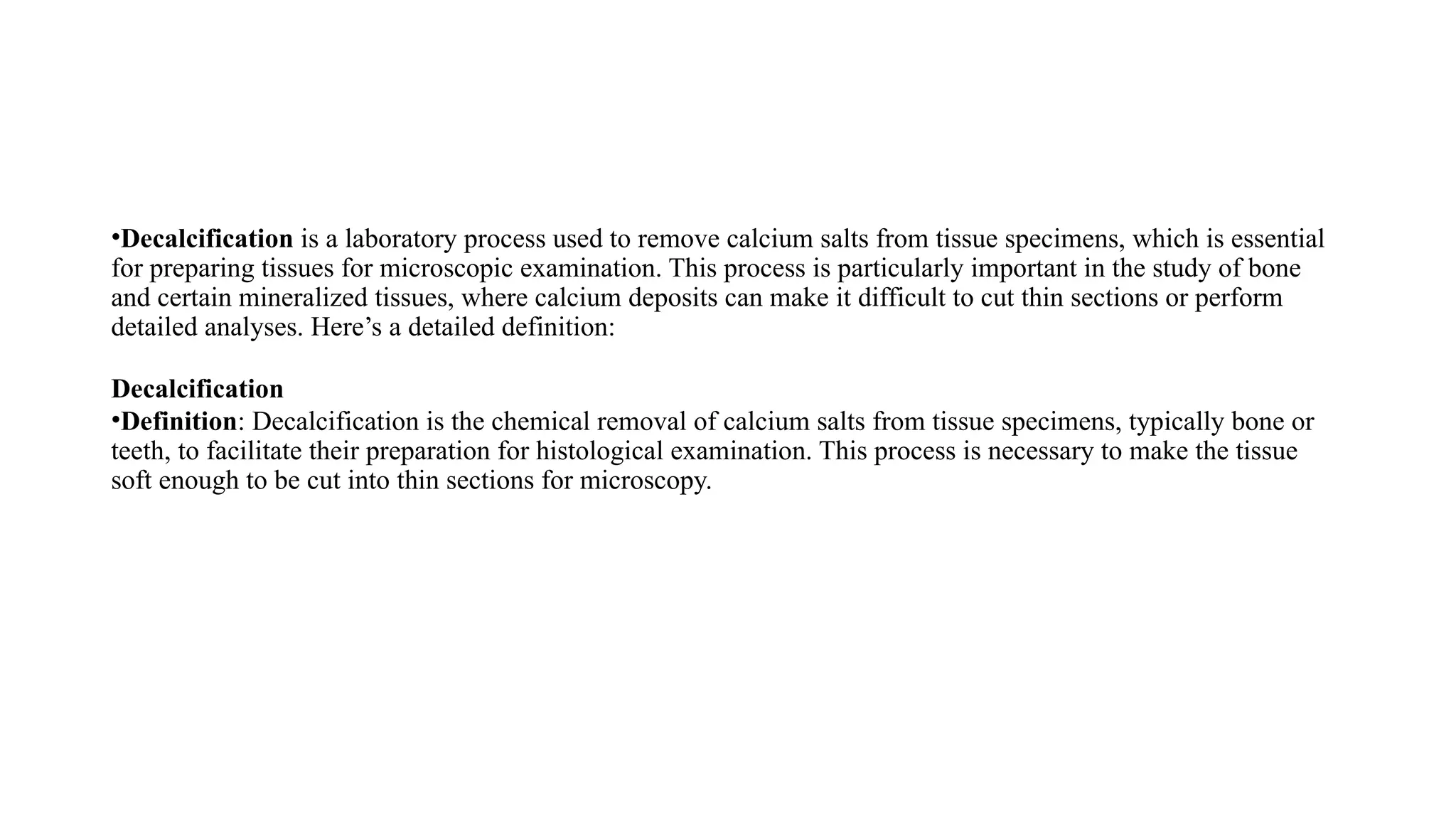The document outlines the process of tissue decalcification and processing, detailing its importance in preparing mineralized tissues for microscopic examination. It covers methods such as acidic and chelating agents, along with the step-by-step procedures for fixation, dehydration, clearing, embedding, sectioning, and staining of biological tissues. Quality control measures and various techniques for tissue processing are also discussed to ensure accurate analysis and preservation of tissue morphology.






















